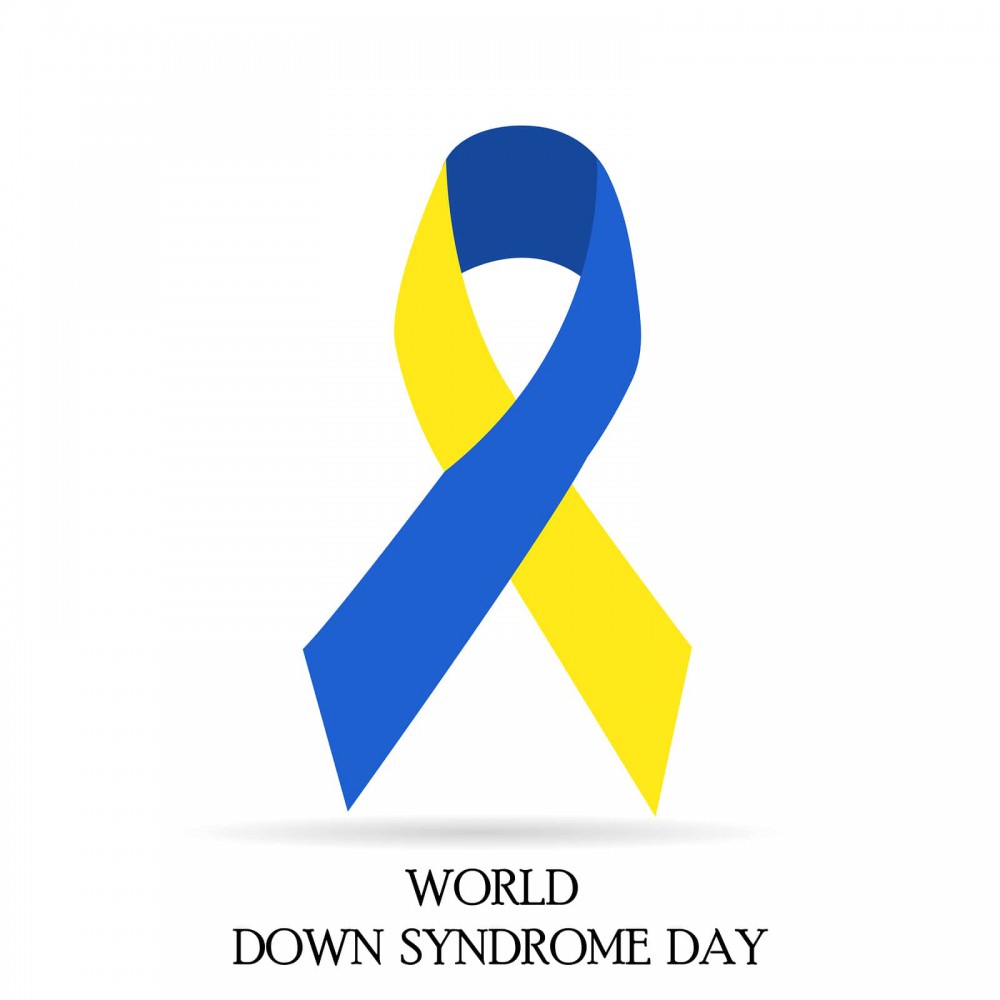
Approximately 6,000 babies are born with Down syndrome each year in the United States. That is one out of every 691 babies, making Down syndrome the most common genetic condition.
Every cell in the human body has a nucleus that houses genetic material in the form of genes which carry the codes responsible for each of our inherited traits. Genes are grouped along rod-like structures known as chromosomes. The typical nucleus of each cell will have 23 pairs of chromosomes, half coming from each parent. When Down syndrome occurs, an individual has a full or partial extra copy of chromosome 21.
Due to the additional genetic material, the course of development is altered causing the characteristics associated with Down syndrome. According to WebMD, the most common features of the disorder include low muscle tone, flat facial features, small nose, upward slanted eyes, small skin folds on the inner corner of the eyes, small or abnormally shaped ears, ability to over extend joints, a single deep crease across the center of the palm and an enlarged tongue.
Heart defects are found in 50% of children with Down syndrome. Some defects are minor, which can be managed with medication, but in some cases the defects require surgery. However, every individual with Down syndrome will possess each of these characteristics to a different degree or not at all.
The Discovery of Down Syndrome
According to the National Down Syndrome Society, Down syndrome was first recognized in 1866 by British physician John Langdon Down. He helped to set the condition apart from mental disability by coining the first term used to describe those with Down syndrome: “mongoloid”. In Down’s opinion, the children with the genetic condition shared similar characteristics to the people of the Mongolian race.
The term “Down syndrome” was suggested later by a group of geneticists who wrote to the British medical journal, The Lancet, with four alternatives to “mongoloid.” Down syndrome was later endorsed by the World Health Organization and officially accepted as standard terminology in 1965.
At the time of the discovery of Down syndrome, it was common practice to institutionalize children with this condition. Most times, they were sent away shortly after being born. The conditions of the institutions were said to be horrible, and the children did not receive the proper medical treatment for complications such as heart disorders, vision and intestinal problems. Because of this, children with Down syndrome would often die during infancy or early adulthood.
It wasn’t until 1959 when a man named Jerome Lejeune discovered the extra chromosome behind Down syndrome. Shortly after this discovery, researchers developed chromosome studies so that medical professionals would be able to confirm the diagnosis of Down syndrome.
Finally in 1960, one of the very first local organizations in support of those with Down syndrome was formed by a woman named Kay McGee after her daughter was diagnosed with the condition. Kay and her husband Marty disregarded common practice and chose not to institutionalize their daughter, Tricia.
Instead they began to reach out to other parents of children with Down syndrome, which led to the start of the National Association for Down Syndrome (NADS), an organization dedicated to recognizing the true value of those with Down syndrome and of supportive parents. Today, NADS provides direct services to the Chicago metropolitan area.
You Might Also Enjoy: Mental Health Awareness Day
Their Fight for Human and Civil Rights
When Down syndrome was first being discovered, it was common practice to separate children with the genetic condition and other mental disabilities from society. It took several decades for people with Down syndrome or other intellectual and developmental disabilities to be accepted as a normal part of the population. From the mid-1800s to as late as the 1990s in some cases, people with Down syndrome were often discriminated against.
According to the Global Down Syndrome Foundation, the early 1900s saw the beginning of the eugenics movement in the United States, which was based upon a social philosophy that advocated for the improvement of human genetic traits. This was done through the promotion of higher reproduction rates among those with desired traits. Those with less-desired traits were encouraged not to reproduce and in most cases were sterilized against their will or killed. By 1981, more than 60,000 people with disabilities were physically and sexually abused through forced sterilization.
During this movement, people with Down syndrome or other intellectual disabilities were a common target. Hitler’s first mass murders under the Aktion-T4 program were influenced by the eugenics movement. Under that program, an estimated 200,000 people with intellectual and developmental disabilities were killed, the majority being people with Down syndrome.
Up until 1984, doctors in the United States would refuse to perform lifesaving procedures, such as corrective heart surgeries on people with Down syndrome. There were also a number of unprosecuted cases involving doctors and fathers conspiring together to tell the mothers of the newborn babies with Down syndrome that their babies had died, when the babies were really just being institutionalized.
As late as the 1980s, there were doctors that classified feeding a baby with Down syndrome as a lifesaving procedure and would instead starve babies with Down syndrome or other disabilities to death. Eventually, governors in all 50 states created legislation to ban the practice.
In 1986, a report titled “Toward Independence” outlined the legal status of Americans with disabilities and documented the existence of discrimination. It stressed the need for federal civil rights legislation for people with disabilities. Four years later, George H.W. Bush signed the Americans with Disabilities Act (ADA), which provides complete civil rights protection for people with intellectual and developmental disabilities.
The ADA is the most sweeping disability rights legislation in history. It mandated the accessibility of local, state and federal governments and programs, that businesses with more than 15 employees provide reasonable accommodations for disabled workers and that public places such as restaurants and stores make reasonable modifications so that disabled people can conveniently access them. The act also mandated access to public transportation, communication and other areas of public life.
 Down Syndrome Today: Acceptance and Survival Rate Continue to Increase
Down Syndrome Today: Acceptance and Survival Rate Continue to Increase
Today, individuals with Down syndrome are being integrated more and more into society with access to schools, healthcare systems, work forces and recreational activities. Every person with Down syndrome has a different degree of cognitive delay varying from mild to severe. However, the majority of people have cognitive delays that are only mild to moderate.
Due to a number of advances in medical technology, people with Down syndrome are living longer than ever before. In 1910, the expected age of survival for children with Down syndrome was nine years. After the discovery of antibiotics, the average age of survival had increased to roughly 19 or 20 years. With recent advancements in clinical treatment such as heart surgery, about 80% of adults with Down syndrome are living to the age of 60 and sometimes even longer.
Every day more and more Americans are interacting with people who have Down syndrome, which only increases the need for widespread awareness of the genetic condition and, most importantly, the acceptance of those who have it.










